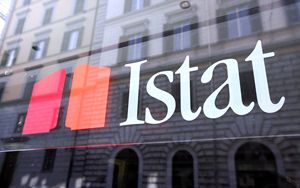(Finance) – One third of the Italian population (almost 20 million inhabitants) resides in municipalities that have very high accessibility to the motorway network, just under six million Italians (10% of the population) live in municipalities with very low accessibility to motorway infrastructure and a further 11.4% of the population lives in municipalities with medium-low accessibility. This is what emerges from the note Istat in the report on the accessibility of municipalities to the main infrastructures.
As regards the railway stations, also in terms of accessibility to airports, the best connected territories are those in the Turin-Milan-Bologna-Venice area. This highly accessible area then extends to Pisa and Florence. This positive territorial continuity is not found in other areas: in the Center and in the South, favorable contexts of high accessibility emerge to airports exclusively around the main airports (for example around Fiumicino airport). In Campania, Liguria, Sicily, Sardinia, Puglia and Tuscany – continues the note – over half of the regional population resides in municipalities with very high accessibility to ports with passenger service.
The theme of accessibility to infrastructures, understood as possibility for citizens and businesses to access the relevant services, has assumed growing importance over time. In particular, accessibility to infrastructural nodes allows us to have a vision of the territory based on the ability to access and use the different types of road networks (road, railway, maritime and air) and/or the different infrastructures present in a given context territorial.
The accessibility study is also closely connected to the theme of the peripherality/marginality of territories, concepts underlying policy strategies and territorial planning. The greater or lesser ease of access to an infrastructure affects the quality of life for citizens and the competitiveness and productivity of businesses.
The objective of the following analysis is to provide a set of measures of the accessibility of the Municipalities to the main transport infrastructures, taking as reference the administrative geography as of 1 January 2021 (7,903 Municipalities). The transport infrastructures used are: 258 railway stations with active passenger service where there is long-distance train traffic (source Italian Railway Network, RFI, year 2022); 2,842 accesses to the motorway network (source TOM TOM commercial road graph, year 2022); 35 airports for commercial services (source National Civil Aviation Authority, Enac, year 2022); 54 statistical ports with passenger traffic (Istat source, year 2022).
The numerous and widespread nature of the railway infrastructure means that for a large part of the national territory it is possible to reach a train station within not too long travel times. Approximately 15% of municipalities are at most 15 minutes from the nearest train station; 53.4% within 30 minutes, with peaks of over 85% in Umbria, 75.6% in Liguria, 71.6% in Friuli-Venezia Giulia and above 60% in Veneto, Lombardy, Emilia-Romagna, Calabria and Sardinia.
